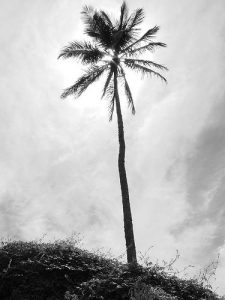Having had the not-so-good fortune to experience two snowstorms within the course of three days, first in D.C. and then in N.Y., I thoroughly enjoyed the balmy weather I had the good luck to experience over Spring Break while visiting Palo Alto, where I had gone to deliver a series of talks at Stanford.

But I couldn’t resist the temptation to slow down, to breathe deeply, to eschew the company of my laptop and to absorb the light, the bright and cheery flowers and the palm trees. In this, I was one with Isaac Bashevis Singer who years ago, in a 1948 article in the Jewish Daily Forward, extolled their many virtues. “The palm trees especially made a great impression on me,” he wrote of the time he spent in Miami Beach. They “created a mood in me, and maybe in other people, too.”
I’ve always loved Singer’s botanical observations. But from afar. This time around, in close proximity to palm trees which, the novelist related, “are like trees and not like trees,” I knew exactly what he meant.
There was an awful lot in Palo Alto to dazzle the senses and tickle the imagination, from the beauty of the Stanford campus and the intellectual bravura of its faculty and students to the seeming incongruity of the Palo Alto kollel.
But it was those palm trees that really held me rapt.



